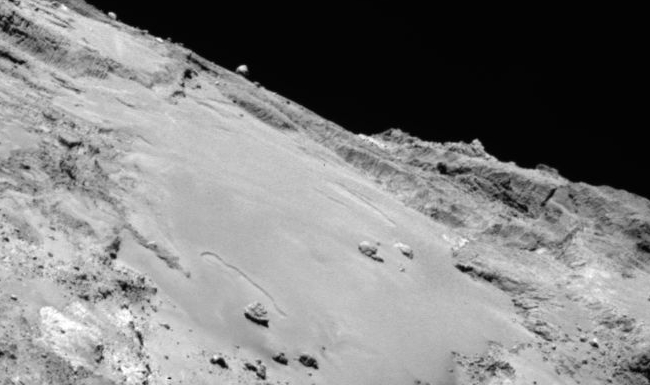Combined Earth-Space radio array discovers superhot quasar interior
The uncertainty of science: Data obtained by combining four ground-based radio telescopes with the Russian orbiting RadioAstron 10-meter radio telescope have detected temperatures of 10 trillion degrees in the quasar 3C 273, a hundred times hotter than predicted possible by theory.
Supermassive black holes, containing millions to billions times the mass of our Sun, reside at the centers of all massive galaxies. These black holes can drive powerful jets that emit prodigiously, often outshining all the stars in their host galaxies. But there is a limit to how bright these jets can be – when electrons get hotter than about 100 billion degrees, they interact with their own emission to produce X-rays and Gamma-rays and quickly cool down.
Astronomers have just reported a startling violation of this long-standing theoretical limit in the quasar 3C 273. “We measure the effective temperature of the quasar core to be hotter than 10 trillion degrees!” comments Yuri Kovalev (Astro Space Center, Lebedev Physical Institute, Moscow, Russia), the RadioAstron project scientist. “This result is very challenging to explain with our current understanding of how relativistic jets of quasars radiate.”
In addition, the higher resolution of the radio images produced by this space/ground-based array was good enough to see the effect produced by the structure of the interstellar material between here and the quasar.
The uncertainty of science: Data obtained by combining four ground-based radio telescopes with the Russian orbiting RadioAstron 10-meter radio telescope have detected temperatures of 10 trillion degrees in the quasar 3C 273, a hundred times hotter than predicted possible by theory.
Supermassive black holes, containing millions to billions times the mass of our Sun, reside at the centers of all massive galaxies. These black holes can drive powerful jets that emit prodigiously, often outshining all the stars in their host galaxies. But there is a limit to how bright these jets can be – when electrons get hotter than about 100 billion degrees, they interact with their own emission to produce X-rays and Gamma-rays and quickly cool down.
Astronomers have just reported a startling violation of this long-standing theoretical limit in the quasar 3C 273. “We measure the effective temperature of the quasar core to be hotter than 10 trillion degrees!” comments Yuri Kovalev (Astro Space Center, Lebedev Physical Institute, Moscow, Russia), the RadioAstron project scientist. “This result is very challenging to explain with our current understanding of how relativistic jets of quasars radiate.”
In addition, the higher resolution of the radio images produced by this space/ground-based array was good enough to see the effect produced by the structure of the interstellar material between here and the quasar.

